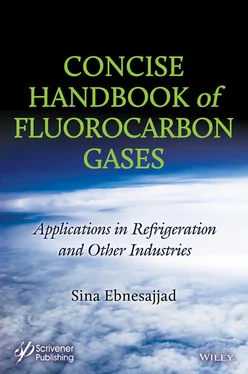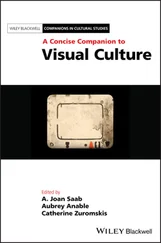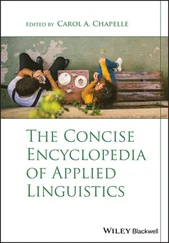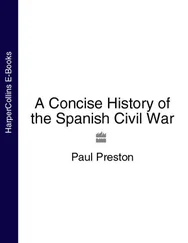1 ...6 7 8 10 11 12 ...16 1 Non-flammable
2 Good thermal stability
3 Low toxicity
4 Atmospheric boiling point of -40°C to 0°C
5 Refrigeration cycle efficiency
Some of the early patents described methods using rather exotic compounds to produce fluorocarbons [3, 4]. Simpler preparation methods have been described for the reaction of hydrofluoric acid with halocarbons (chlorine and bromine) using a catalyst [5].
Fluorocarbon in this book refers an acyclic alkane hydrocarbon in which all or some of hydrogen atoms have been replaced with fluorine (Table 2.1). An acyclic alkyl has the general formula C nH 2n+1. Some chlorine or bromine atoms may also be present in the molecule. Depending on the structure of chemical compound, fluorocarbon consists of chlorofluorocarbon (CFC), hydrochlorofluorocarbon (HCFC), hydrofluorocarbon (HFC) and hydrofluoroolefin (HFO). All except HFO have been the targets for obsolescence under Montreal Protocol and its amendments. Major fluorocarbon applications include refrigerants, blowing, agents (foam), solvents, aerosol propellants and fire extinguishers.
Chlorofluorocarbons contain Carbon and some combination of Fluorine and Chlorine atoms. They were the original fluorocarbons developed in the 1930’s. Hydrochlorofluorocarbons contain Hydrogen, Chlorine, Fluorine, and Carbon atoms; they were quickly developed and commercialized after the enactment of the Montreal Protocol. Hydrofluorocarbons contain Hydrogen, Fluorine, and Carbon (no chlorine) known as the third generation of fluorocarbons.
Hydrobromofluorocarbons contain Hydrogen, Bromine, Fluorine, and Carbon atoms. Perfluorocarbons contain Fluorine, Carbon, and Bromine atoms, and some contain Chlorine and/or Hydrogen atoms.
Table 2.1Examples of various acyclic alkane fluorocarbons.
| Compound |
Chemical formula |
Form |
| Hexane |
CH 3-CH 3 |
Alkane |
| Perfluorohexane |
CF 3-CF 3 |
Perfluorinated |
| 2-bromo-2-chloro-1,1,1- trifluoroethane (Halothane) |
CF 3-CHBrCl |
Fluorobromochlorinated |
| 1,2-dichloro-1,1,2-trifluoroethane |
CClF 2-CHClF |
Hydrochlorofluorocarbon |
| 1,1,2-Trifluoroethane |
CHF 2-CH 2F |
Hydrofluorocarbon |
Hydrobromofluorocarbons contain Hydrogen, Bromine, Fluorine, and Carbon atoms. Perfluorocarbons contain Fluorine, Carbon, and Bromine atoms, and some contain Chlorine and/or Hydrogen atoms.
To avoid repeating the rather long chemical names of fluorocarbons a system has been devised to use codes for each of them. Oak Ridge National Laboratory [6] has provided the designations of fluorocarbon codes (Section 2.2.1).
2.3 Designations for Fluorocarbons
Fluorocarbon compounds are designated by a combination of letters and numbers (e.g., CFC-11, HCFC-142b). In the latter example, the lower-case b refers to an isomer. It has no relationship to the chemical formula (C 2H 3F 2Cl), rather it designates a particular structural arrangement of the atoms in the molecule. For example, HCFC-142b identifies the isomer in which all three hydrogen atoms are attached to the same carbon atom, and the structural formula is written as CH 3CF 2Cl. By contrast, HCFC-142 (without the b) refers to an arrangement in which one carbon atom is attached to two hydrogen atoms and one chlorine atom, while the other carbon atom is attached to the third hydrogen atom and two fluorine atoms (CH 2ClCHF 2).
To find the number, given the chemical formula: consider the number as consisting of 3 digits: a , b , and c . For 2-digit numbers (e.g., CFC-11) one digit is zero (e.g., CFC-011).
a is the number of carbon atoms minus 1;
b is the number of hydrogen atoms plus 1;
c is the number of fluorine atoms.
| For CFCl 3: |
a = the number of carbon atoms (1) minus 1 = 0 |
|
b = the number of hydrogen atoms (0) plus 1 = 1 |
|
c = the number of fluorine atom = 1 |
and the compound is CFC-011, or CFC-11.
Similarly:
CCl 2F 2is CFC-012
C 2Cl 3F 3is CFC-113
To find the chemical formula, given the number: first add 90 to the abc number, to obtain a 3-digit definite number ( def ), where:
d is the number of carbon atoms;
e is the number of hydrogen atoms;
f is the number of fluorine atoms; and
2d + 2 - e - f = the number of chlorine atoms.
For CFC-11: 90 + 11 = 101, so the number of carbon atoms is 1, the number of hydrogen atoms is zero, the number of fluorine atoms is 1, and the number of chlorine atoms is (2 + 2 - 0 - 1 = 3). So the chemical formula for CFC-11 is CFCl 3. That is, it has 1 carbon atom, no hydrogen, 1 fluorine atom, and 3 chlorine atoms.
| Similarly: |
CFC-12: 12 + 90 = 102; 4-2 = 2 Cl; the chemical formula is: CCl 2F 2CFC-113: 113 + 90 = 203; 6-3 = 3 Cl; the chemical formula is: C2Cl 3F 3HCFC-142b: 142 + 90 = 232; 6-5 = 1 Cl; the chemical formula is: C 2H 3F 2Cl |
Halons are fluorocarbons with at least one bromine atom.
Halon (no hydrogen number) nomenclature is relatively simple; each halon has an abcd number, where:
a = the number of carbon atoms;
b = the number of fluorine atoms;
c = the number of chlorine atoms, and
d = the number of bromine atoms.
C 2F 4Br 2is Halon 2402. And, an example going the other way Halon 1211 is CF 2ClBr. It is not possible to speak about fluorocarbons without bringing up the issue of the effect of these compounds on the Earth’s Ozone Layer and the Montreal Protocol (described later in this section) that has banned most or all of those fluorocarbons. Examples of the three main commercial classes, based on their interaction with ozone, of fluorocarbons are summarized in Table 2.2. CFC’s have been completely phased out and the others, except for HFOs, are in various stages of being phased out.
Hydrofluorocarbons and, to a very limited extent, perfluorocarbons (PFCs), serve as alternatives to ozone depleting substances phased out under the Montreal Protocol. Tables 2.3 and 2.4 summarize HCFC, HFCs and PFCs fluorocarbons. Applications of HFCs are presented in Table 2.5.
The usage of olefinic fluorocarbons required an extension of the designation system by ASHRAE (American Society of Heating, Refrigerating and Air-Conditioning Engineers). The following descriptions have been adopted from an ASHRAE publication [10].
Olefin : an organic (carbon containing) compound characterized by the presence of one or more double bonds between carbon atoms in the molecule. Such a compound can also be described as being unsaturated.
Unsaturated : as used in this standard, an organic (carbon containing) compound in which one or more carbon atom is joined to other carbon atoms by a carbon-carbon double bond. Such a compound can also be described as an olefin.
The identifying numbers assigned to the hydrocarbons and halocarbons of the methane, ethane, ethene, propane, propene, and cyclobutane series are such that the chemical composition of the compounds can be explicitly determined from the refrigerant numbers, and vice versa, without ambiguity. The molecular structure can be similarly determined for the methane, ethane, ethene, and most of the propane and propene series from only the identification number.
The carbon atoms are numbered sequentially, in order of appearance, with the number 1 assigned to the end carbon with the greatest number of hydrogen substituents (i.e., number of halogenated atoms substituted for hydrogen on the alkane end carbon atoms). In the case where both end carbons of a saturated compound contain the same number of (but different) halogen atoms the number 1 shall be assigned to the first end carbon, defined as having the largest number of bromine, then chlorine, then fluorine, and then iodine atoms. If the compound is an olefin, then the end carbon nearest to the double bond will be assigned the number “1”, as the presence of a double bond in the backbone of the molecule has priority over substituent groups on the molecule.
Читать дальше












